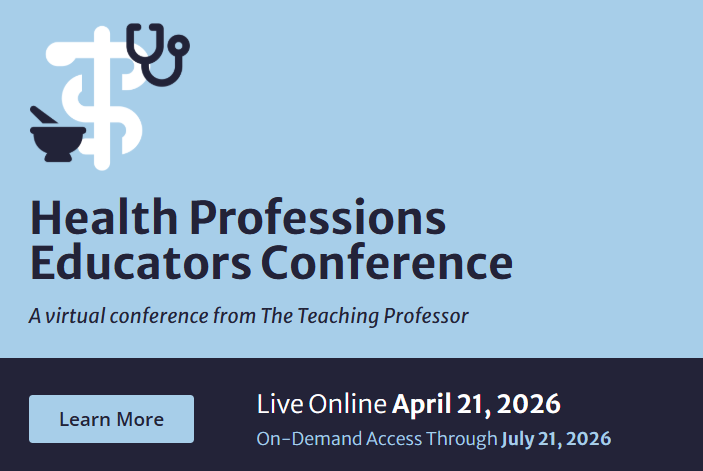One-minute papers have deservedly become one of the more common classroom activities deployed by teachers. This is consistent with Lang’s (2016a) perspective that “frequent low-stakes writing assignments constitute one of the best methods you can use to solicit engagement and thinking in class.” Nonetheless, many teachers are wedded to the notion that one-minute papers can only be initiated at the end of a class. Lang (2016a) challenges us to rethink how the start of class is used: “Starting with five minutes of writing helps students make the transition from the outside world to the classroom.” This advice is relevant to instructors in all disciplines. One-minute papers are typically ungraded, but they could also be graded. For more conventional end-of-class one-minute papers, I direct readers to Rosen’s (2016) synopsis of “muddiest point” questions and suggest that they consider the following particularly beneficial questions (see Lang 2016b and University of Massachusetts Boston 2020 for more details).
- Was there a position taken in today’s class that you strongly disagreed with?
- What did you learn today that you might apply after graduating?
- Identify a television show, film, or book that illustrates a course concept discussed today.
On the use of films in courses, Sunderland et al. (2009) offer excellent insights. These authors recommend that instructors: prepare a question sheet for students in advance of the film showing; stop the film at key points to clarify what has happened and to discuss the relevance of the plot lines thus far; and integrate the film into assignments and communicate this plan to students at the start of semester.
Additionally, indices are ideally suited for teaching, in that teachers and students can draw out key trends and discuss rival interpretations of these trends. More fundamentally, students can think through questions of measurement and critically examine the methodologies adopted to create these indices. In a world that is increasingly inclined to rankings, pertinent indices are likely available to nearly all instructors. I have used the United Nations Gender Development Index and Human Development Index to strong effect. Teachers can highlight unexpected data points to spark class discussion. As Bain (2004) argues, learning can effectively be stimulated when “you begin with a puzzle—you get somebody puzzled and tied in knots and mixed up.” To take one example, I raise a number of indices of global competitiveness and highlight the dominant position of Scandinavian countries. The preponderance of Scandinavian economies at the top of these lists is surprising to a significant number of students. The class then delves into explanations for this outcome.
A colleague introduced me to the idea of student mini-lectures. The instructor puts out a call for any student volunteers willing to share an interesting angle on a course theme, recognizing that students may have relevant knowledge and experiences from travel, internships, family histories, or other sources. Students appreciate learning new information from other students. After I have approved the mini-lecture topic, the student delivers the talk. Brevity is taught here, as I ask for mini-lectures lasting for no more than seven minutes each. Based on the advice of communications experts, who maintain that any presentation should be structured around three key messages, I specify that the mini-lecture must feature three main messages.
Two thirds of the way through a semester, you could also consider running what is essentially a trivia night style exercise. This is a useful moment to look back on the course to date, while demonstrating that you have listened attentively to student contributions. Students form small groups and are provided with an answer sheet centered on four types of questions:
- Revisit some of the positions of their classmates and see if they can remember who made which claims. This can also include comparative statements, such as which two students agreed on a certain point, or which two students disagreed on a point.
- Seek to identify noteworthy points from the semester, including key arguments advanced by authors and guest speakers.
- See if they can correctly identify data points from some of the international indices you have drawn upon.
- Revisit any humorous episodes from the semester.
Working in groups, the students reflect together on arguments and evidence developed in the course and further deepen their intellectual connections with fellow students. Small book prizes could be offered to teams with the highest number of correct responses.
Instructors should approach incentive systems cautiously. Targeted incentives can play a role in sending a message about the importance of an issue in the class. However, students have said to me that they find incentives an artificial construct when they are applied to speaking in class. Small incentives can have a place. Let me offer one example. My general view is that taking attendance at a university is unnecessary, and that students, as adults who have paid for tuition, should be free to attend class or not. Still, I have come around to offering a small incentive to those who have achieved full attendance. In these cases, I extend the final assignment submission date by one week. Ask your department to borrow or buy a simple device on which students beep their student ID at the end—not the start—of class. The data are easily downloadable to an Excel file.
The next part in the series offers a number of tips to improve the design of assignments.
Justin Robertson is an associate professor in the Department of Asian and International Studies at the City University of Hong Kong. He is a scholar of the international political economy with his research focused on new capitalist forms in emerging markets. He is the author of Localizing Global Finance: The Rise of Western-Style Private Equity in China and US-Asia Economic Relations: A Political Economy of Crisis and the Rise of New Business Actors. He has had articles published in Globalizations, Global Networks, International Political Sociology, New Political Economy, The Pacific Review, and Review of International Political Economy. A teaching award winner, his teaching approach is founded on encouraging students to conduct primary research, directing a lively classroom featuring interactive software and problem-solving exercises and connecting students with experts in the field and having students share their findings with practitioners.
References
Bain, Ken (2004) What the Best College Teachers Do, Cambridge: Harvard University Press.
Lang, James M. (2016a) “Small Changes in Teaching: The First 5 Minutes of Class” The Chronicle of Higher Education, 15 November.
Lang, James M. (2016b) “Small Changes in Teaching: Making Connections” The Chronicle of Higher Education, 8 February.
Rosen, Amanda (2016) “Engaging Students, Part 3: The Muddiest Point” Active Learning in Political Science Blog, 27 January.
Sunderland, Sheri, Rothermel, Jonathan C. and Lusk, Adam (2009) “Making Movies Active: Lessons from Simulations” PS: Political Science & Politics, Vol. 42, No. 3, 543-547.
University of Massachusetts Boston (2020) “Active Learning Ideas” <https://www.umb.edu/elearning/active_learning/ideas> accessed 18 August 2020.






